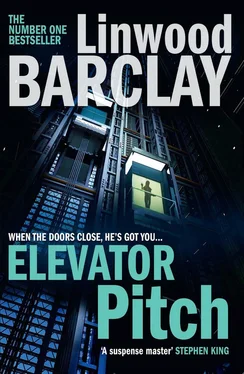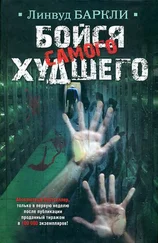It was a different story on the observation deck, where dozens of visitors were informed their trip back to street level was going to be somewhat more arduous than their ride to the top. Soon, the stairwells were filled with people, and not only those who’d been to the top, but also the thousands of people who worked in the building and were heading home.
A similar scene was playing out over at the Top of the Rock, the viewing area atop Rockefeller Center. Managers of almost all city tourist sites, even those that did not soar into the sky, decided to close their doors. Museums shut down. The guards on the various floors displaying art at the Guggenheim, which could have been accessed by walking up the gradually sloped floor that circled the atrium, announced that everyone was to leave the building. The consensus was that if the city’s elevators were a possible terrorist target, so might be notable landmarks.
The fear was that whoever was messing with New York was just getting started.
The millions who traveled countless stories upward every day were cutting out early. Anxiety around being trapped at work had prompted many to get out while they knew they could. But what awaited them when they got home, if they happened to live in a towering apartment building, was the same situation in reverse. Thousands decided to delay their return and went out to dinner, hoping that within a few hours the city would announce that the crisis was over and the elevators were once again safe to use.
Tourists arriving at JFK and LaGuardia, unaware of the mayor’s decree, were stunned when they got to their hotels and learned they could not get to their rooms if they weren’t prepared to take the stairs. Not good news if you’d brought half a dozen suitcases with you. Hotels reported scores of cancellations from those who had not yet left for New York but had seen the news.
In short, it was one big shitshow.
The mayor, in his City Hall office, jumped from channel to channel, seeing reports from all corners of the city. In the room with him were Valerie, Vallins, and Glover.
“What a goddamn clusterfuck,” Headley said, shaking his head with despair.
“It is that,” Valerie said.
“You heard anything?” he asked her.
“I just got off the phone with Homeland, and the chief. There’s nothing new.”
“We have to get a fucking handle on this,” he said. “They’ve got to find whoever did this and they have to do it right fucking now! I’m being crucified out there. We need to come up with a new statement, something that offers some reassurance.”
Valerie said, “Inspections are being made. I’m hearing that a few elevators are already back in service. But I think we’re looking at a couple of days before things are back to normal.”
“Jesus Christ.”
The cell phone on the mayor’s desk started buzzing. Vallins was closest, and grabbed it.
“Mayor Headley’s office,” he said.
“Put the son of a bitch on,” a man said.
“Who’s calling?”
“Rodney Coughlin.”
Vallins said, “Hang on.” Headley looked at him. “You’re probably going to want to take this. It’s Coughlin.”
Headley took a moment to prepare himself, then took the phone. “Rodney,” he said.
“What the fuck are you thinking?” Coughlin said.
“Listen, I know—”
“Maybe you’ve forgotten what’s happening on Thursday. Does Thursday ring a bell, Dick? Huh?”
“I know. I know.”
“How do you think my guests will like walking up ninety-seven flights of stairs for the official opening of Top of the Park? Better have some pretty fucking amazing appetizers to make that kind of trek.”
“It’s a temporary measure,” Headley said.
“Who found a way around the rules to give half a mill to your campaign?” Coughlin asked. “It’s slipped my mind.”
“Rodney, I know. Look, have your people do a complete sweep of the elevators. I’m guessing they’ve already been told what to look for. I’m sure—”
“You know who’s going to be here, for the opening of the tallest residential building in the entire fucking country?”
“Rodney, I—”
“I’ll tell you who. Everybody. ”
Vallins waved a hand, trying to get the mayor’s attention. Headley put his hand over the phone and whispered, “What?”
“Send me,” he whispered.
“What?”
“Tell him you’re dispatching one of your aides to personally make sure everything will be okay.”
Headley squinted. “What do you know about elevators?”
Vallins shook his head, signaling that wasn’t his point. He whispered, “I’ll get someone. I’ll oversee it.”
Headley nodded, then went back to the phone. “Rodney, listen to me.”
The mayor made his pitch. The second he ended the call, his face went red and his body shook.
“That fucking son of a bitch,” he said, and then pitched the phone in his hand directly at the TV screen, which had been showing a YouTube video of several people stumbling all over each other in a high-rise stairwell.
The screen shattered.
Valerie stifled a scream.
“Goddam fucking hell,” Headley said. “Who does Coughlin think he is, talking to me like that?”
Glover, who had said nothing through any of this, walked over to the mayor’s office window and gazed out at the city.
And smiled.
More than two dozen NYPD detectives crowded into the small, rectangular conference room. Some had taken chairs, others were leaning against the wall along the perimeter of the room. Nearly everyone had a takeout coffee in hand.
Jerry Bourque and Lois Delgado stood off to one side, arms crossed. At one end of the room, with an oversized computer monitor on the wall behind, were Chief Washington, a woman from the Federal Bureau of Investigation, and Homeland’s Brian Cartland.
The detectives summoned to this meeting had originally been told they’d be focusing on the three elevator tragedies, but the scope of the investigation had been broadened.
They were now also looking at the taxi bombing on East Forty-Ninth Street. While there was not yet anything specific to indicate a connection between the elevator events and the bombing, the fact that the two incidents happened within minutes of each other could not be ignored. It was possible, the chief speculated, that the goal of the person or persons responsible had been to sow chaos by triggering simultaneous crises.
Attempts were being made to acquire whatever surveillance video existed from the three buildings where the elevators had been sabotaged. Two detectives across the room from Bourque and Delgado said these efforts were being undercut because none of the buildings had cameras set up in the elevator control rooms, where they believed the perpetrator would have had to make some initial connections between the main system and the portable controller. And as for saved video or images from other cameras, they had no idea when the elevators might have been tampered with. Should they start looking at video from last week, or six months ago?
But for sure, someone had to have gotten into those shafts at some point to mount cameras that would provide a view to what was happening inside the cars. Computer experts, the detectives said, had been brought in to determine whether it was possible to tell where the images being transmitted by the cameras had gone. They hoped to have more on that within twenty-four hours.
Street surveillance video was being gathered to help with the taxi explosion investigation. The car’s route that morning, up to the moment of the blast, was being traced, and once that was nailed down, cameras along that path would be found and video examined. A preliminary examination of the destroyed vehicle suggested the explosion had originated in its center, suggesting further that the bomb had been left on the floor of the backseat by a passenger.
Читать дальше
Конец ознакомительного отрывка
Купить книгу








![Линвуд Баркли - Последний выстрел [litres]](/books/412435/linvud-barkli-poslednij-vystrel-litres-thumb.webp)



